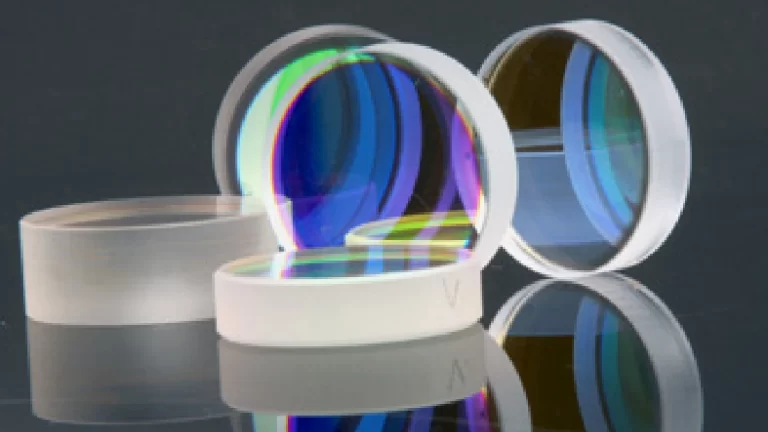The Different Types of Shortpass Filters
In the world of optics and light manipulation, filters are indispensable tools. Shortpass filters, in particular, play a crucial role in allowing certain wavelengths of light to pass through while blocking others. These versatile filters find applications in various fields, from photography to spectroscopy. In this blog post, we will delve into the different types of shortpass filters, their characteristics, and their diverse applications.
Understanding Shortpass Filters
Shortpass filters, also known as shortwave pass filters or low-pass filters, are optical devices designed to transmit shorter wavelengths of light while attenuating or blocking longer wavelengths. They achieve this by using specially engineered materials with specific optical properties. The primary function of shortpass filters is to selectively allow visible, ultraviolet (UV), or shorter wavelengths to pass through while blocking longer wavelengths, such as infrared (IR).
Now, let’s explore the various types of shortpass filters:
1. Interference Shortpass Filters:
Interference shortpass filters are made by depositing multiple layers of dielectric materials onto a substrate. These layers are precisely designed to create interference effects that allow only shorter wavelengths to pass through while reflecting or absorbing longer wavelengths. Interference shortpass filters are known for their high spectral precision and can be customized for specific applications, such as fluorescence microscopy and spectroscopy.
2. Absorptive Shortpass Filters:
Absorptive shortpass filters are made from materials that inherently absorb longer wavelengths of light. These filters work by allowing shorter wavelengths to pass through while absorbing and dissipating the energy of longer wavelengths. Absorptive shortpass filters are commonly used for applications like UV protection in sunglasses and blocking IR radiation in optical systems.
3. Dichroic Shortpass Filters:
Dichroic shortpass filters, also known as dichroic mirrors, use a combination of interference and absorption properties. They are designed to reflect longer wavelengths while transmitting shorter wavelengths. Dichroic shortpass filters are frequently used in fluorescence microscopy to separate excitation and emission light, ensuring that only the desired wavelengths reach the detector.
4. Edge Shortpass Filters:
Edge shortpass filters have a sharp spectral edge, meaning they have a well-defined wavelength at which they begin to block light. These filters are commonly used in applications where precise wavelength control is essential, such as optical communications and spectroscopy.
Applications of Shortpass Filters
1. Photography and Imaging: Shortpass filters are used to control the spectral content of light in photography and imaging, enhancing image quality and achieving artistic effects.
2. Fluorescence Microscopy: In microscopy, shortpass filters are crucial for isolating specific wavelengths in fluorescence imaging.
3. Spectroscopy: Shortpass filters are utilized in spectrometers to select specific spectral regions for analysis.
4. Optical Communications: In optical fiber communication systems, shortpass filters help remove unwanted wavelengths, improving signal quality.
5. Astronomy: Astronomical instruments use shortpass filters to block atmospheric interference and isolate specific spectral lines from celestial objects.
Conclusion:
Shortpass filters are essential components in optics, allowing us to manipulate and control light for various applications. Whether you’re a photographer seeking to enhance the vibrancy of your images or a scientist delving into the mysteries of the universe, understanding the different types of shortpass filters and their capabilities can help you harness the power of light in your field of expertise. These versatile filters continue to play a pivotal role in advancing our understanding of the world around us.
Important FAQs:
Q1: What is a shortpass filter?
A: A shortpass filter is an optical filter that allows shorter wavelengths of light to pass through while blocking longer wavelengths.
Q2: What are the different types of shortpass filters?
A: The main types of shortpass filters include colored glass filters, interference filters, and absorptive filters.
Q3: How does a colored glass shortpass filter work?
A: Colored glass shortpass filters selectively transmit shorter wavelengths of light while absorbing longer wavelengths based on the properties of the glass material.
Q4: What is an interference shortpass filter?
A: An interference shortpass filter consists of multiple thin film layers that reflect longer wavelengths and transmit shorter wavelengths through constructive interference.
Q5: How does an absorptive shortpass filter function?
A: An absorptive shortpass filter absorbs longer wavelengths of light through dye or pigment molecules embedded in the filter material, allowing shorter wavelengths to pass through.
Q6: What are the applications of shortpass filters?
A: Shortpass filters are used in fluorescence microscopy, ultraviolet (UV) photography, and optical fiber communication to isolate specific wavelengths of light and enhance image contrast.
Q7: Can shortpass filters be customized for specific wavelength ranges?
A: Yes, shortpass filters can be customized with cutoff wavelengths tailored to specific applications, allowing flexibility based on customer requirements.
Q8: What factors should be considered when selecting a shortpass filter?
A: Factors to consider include the cutoff wavelength, transmission efficiency, spectral shape, durability, and compatibility with other optical components in the system.
Thank you for exploring our blog on the different types of shortpass filters. We hope you found the information helpful and informative. If you have any further questions or topics you’d like us to cover, please feel free to reach out. Stay tuned for more insightful content!








